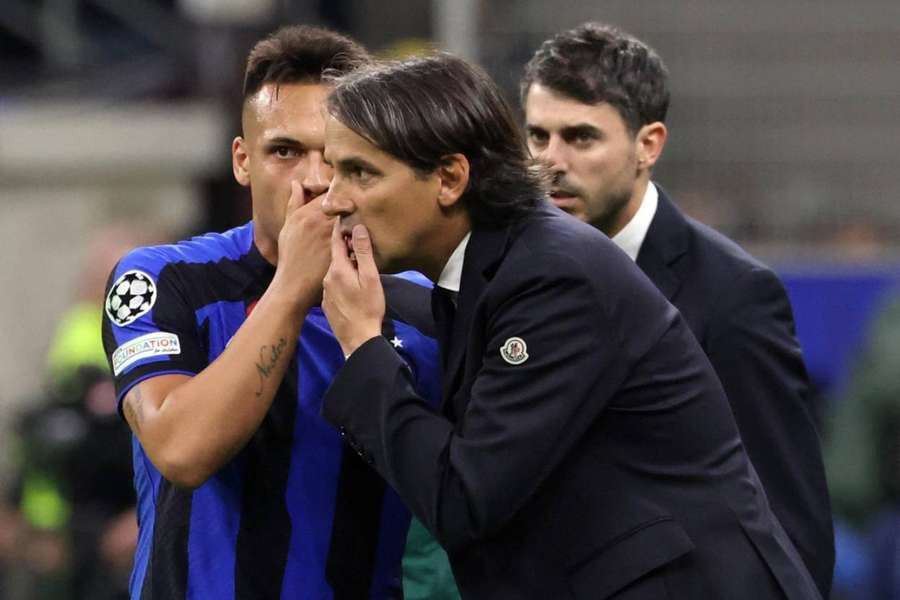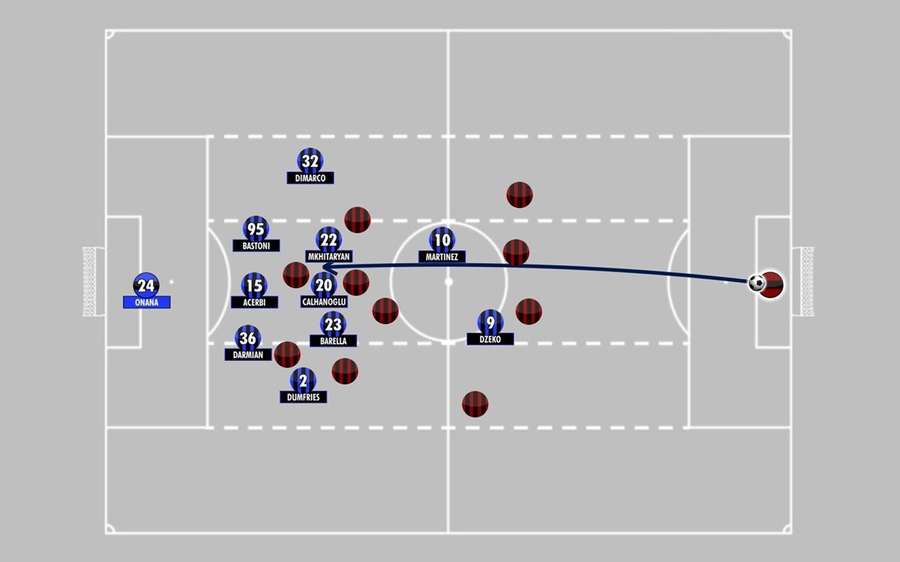How can Inter beat Manchester City in the Champions League final?

Compactness. A word that runs through perhaps every article describing the current Inter under coach Simone Inzaghi (47). The club is by no means a collection of the world's elite defenders, it's just that the tactics chosen make them a very difficult team to play against.
The Nerazzurri will very likely enter the match in their traditional 3-5-2 (5-3-2) formation, with the defensive line once again operating in a deep block in close proximity with the midfield. If you would have told someone a few years ago that Hakan Calhanoglu (29) would be proficient as a deep playmaker on the pitch and Henrik Mkhitaryan (34) would excel as a box-to-box midfielder, they would probably have looked at you with disbelief.
However, Inzaghi has managed to turn once purely attacking players into footballers who perform their duties with care in a defensively tuned system and are key to the team's current success. A direct consequence of this compactness is the difficult-to-break midfield, where AC Milan twice failed to find a crack in the semi-final derby and, with only 0.54 and 0.66 expected goals respectively, did not score once.

City coach Pep Guardiola (52) must therefore first and foremost figure out a way to overcome this obstacle and get his goalscorer Erling Haaland (22) into the game as much as possible. At least in the early stages of the final, it will probably be played in Inter's half. Their opponents are switching from a 4-2-3-1 formation to a 3-2-4-1 when in possession of the ball, with John Stones (29) moving into the centre of the pitch (more on his evolution in this article) alongside Rodri, with whom he will swap sides, while Ilkay Gundogan (32) and Kevin De Bruyne (31) operate in their respective midfields.
Inter will play without the ball and wait to see what their opponents come up with. One of the likely scenarios will be a a cross to De Bruyne from the left and an attempted cross to the back post, which is one of the big trends in this year's Premier League. Set pieces could also be a good weapon for the Citizens, in which Inter are not one of the most secure Serie A units in the current season. This is especially evident when defending corner kicks, in which only seven other teams in Italy have allowed more dangerous chances on average per corner.
Dilemma: Dzeko or Lukaku?
What will be even more interesting to watch is what happens in the moments when the Inter has the ball. When Real Madrid players tried to play through the middle in the semi-finals of the competition, they had huge problems with City's pressing. This was mainly due to the great performances of Rodri and Stones, who won a huge amount of balls. Therefore, Inter are directly offered to take advantage of long passes from Andre Onana (27), who is considered one of the best Serie A goalkeepers in the game with his feet.
The main recipient of his long balls can be the lanky Edin Dzeko (37), but playing sideways to both wing backs or, probably the most creative solution, to Nicolo Barella (26) is also an option. The latter is, after all, perhaps one of the best central midfielders in the world at moving the ball into open space with his runs. After receiving the ball, he is able to cross the line of the press, travel a long distance with it and then create a dangerous scoring chance with a pass.
Offensively, Inter will rely mainly on counter-attacks and the hard work of the aforementioned Džeko, in whose direction a high number of long balls will certainly flow, which he will be tasked with inferring for Lautaro Martinez (25). The latter will then run mainly down the left side, where Mkhitaryan and wingback Federico Dimarco (25) are quick to react.
The Italian international is not only able to send very accurate crosses into the opponents' area, but he is also able to penetrate that area and fire a dangerous shot. He has scored four times in Serie A and is still waiting for his first goal in the Champions League this season. Runs behind the defence were sorely lacking in the semi-final for Real and Inter need to focus on them.
Playing with his back to goal is also one of Romelu Lukaku's (29) strengths, which means that City have to keep a good eye on long balls for the entire 90 minutes of the match. In an advanced data metric that assesses how well a player is able to find a favourable position to take the ball, Lukaku is among the best strikers in the Italian top flight. Only behind him ranked both of his offensive partners from Inter, Victor Osimhen (24) from Napoli or Olivier Giroud (36) from AC Milan.
Deciding whether to field Dzeko or Lukaku from the start will be one of Inzaghi's biggest dilemmas. And very soon it will also be clear how he will approach the match tactically. Prediction models give Manchester City around a 75% chance of winning. In the final match, however, both teams are equidistant from triumph - a single win.
Follow the final with Flashscore.
